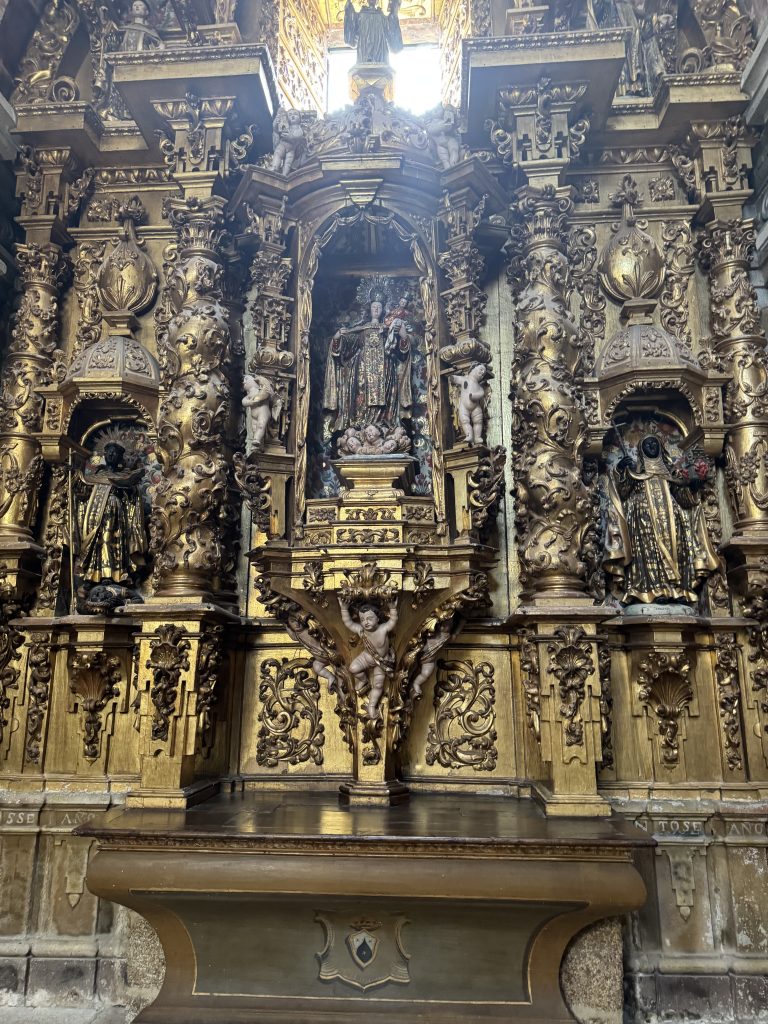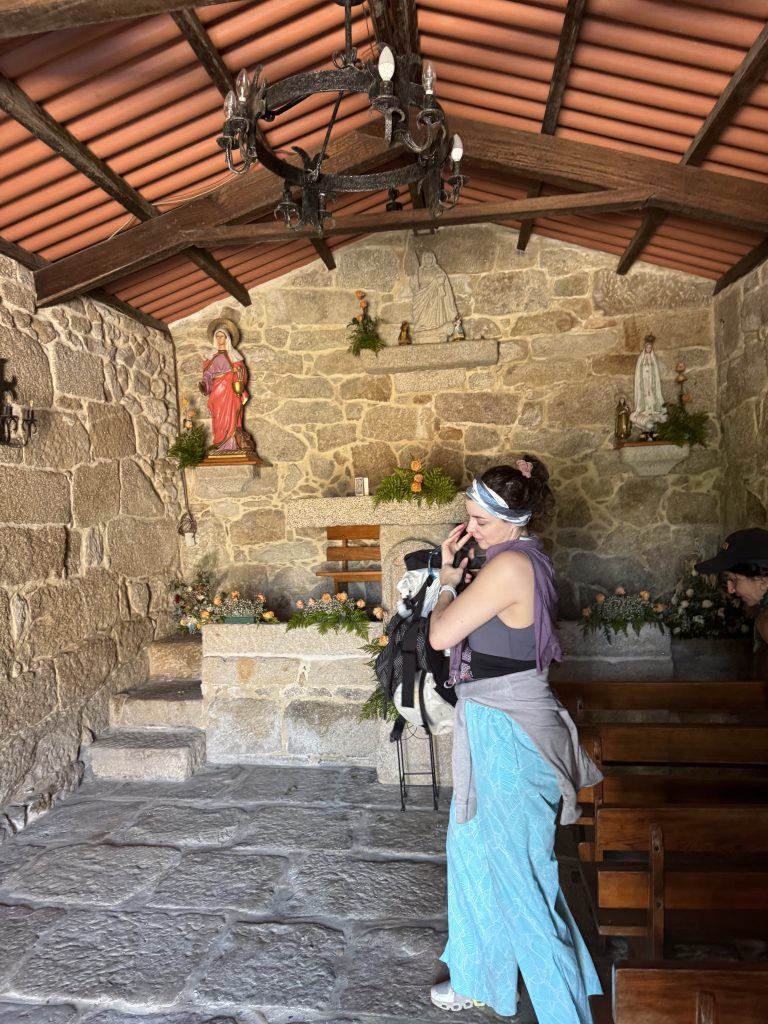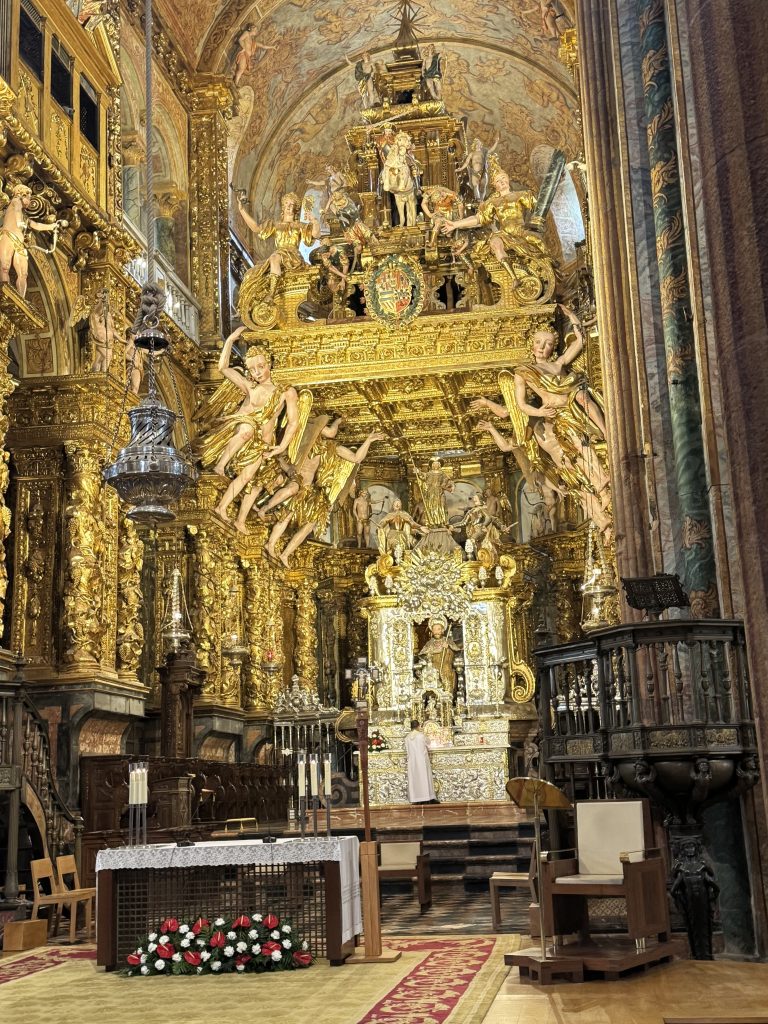
Dear reader, my mind still often drifts back to the Camino, as though my boots are determined to keep walking even while I sit at my desk. Along that pilgrim’s road I stepped into more churches, chapels, and cathedrals than I can rightly count. Now, before you accuse me of excessive piety, I should admit that there was often a very practical reason for these holy visits: nearly every church along the way offered a stamp for the Pilgrim Credential. And without those stamps, there would be no certificate at journey’s end, no proof that one’s sore feet had indeed earned their blisters honestly. So, in I went, with my little booklet, hoping for the blessing of ink as well as grace.
Some of those stops were as simple as a stone bowl—plain walls, unadorned altar, a silence that almost echoed. One such was the pilgrim chapel near Redondela: stone upon stone, with nothing to distract the eye except, perhaps, one’s own thoughts.

Others were quite different—filled with paintings, bright colours, carved wooden reredoses pulling your gaze toward the altar and the holy sacrifice offered there. And then, of course, there were the cathedrals. Ah, the cathedrals! They seemed determined to prove that if heaven could fit under one roof, this would be the place. They were filled to overflowing with art, colour, statues, and carvings. To some eyes, they were inspiring. To others, perhaps, a bit gaudy—like a well-meaning aunt who insists on wearing all her jewelry at once.
But here’s what struck me most: all of these great spaces were built centuries ago, in a world without cranes, power tools, or laser levels. The immense stone angels in Santiago’s cathedral, towering over the chancel, each one carved by hand, must have cost some craftsman years of his life. And then, the sheer feat of raising them into place—well, I can hardly manage to put up curtains without catastrophe, so you can imagine my awe.

Regardless of whether you prefer the plainness of bare stone or the splendour of gilded wood, what mattered most to me was the dedication they all represented. Each brushstroke of paint, each carved feather of an angel’s wing, was someone’s offering to God. They were the work of hands and hearts, given in devotion to the One whose presence was known at the altar, where Christ’s Body and Blood were shared day by day in the pilgrim’s Mass.
It left me thinking, dear reader, about what our own offerings look like today. Perhaps we don’t carve stone angels or paint ceilings (and truth be told, I’d be a danger to myself if I tried). But in our care for one another, in our quiet acts of devotion, even in the way we share food and conversation, we too offer something to God. And though our gifts may look plain or simple, they are no less holy when given with love.